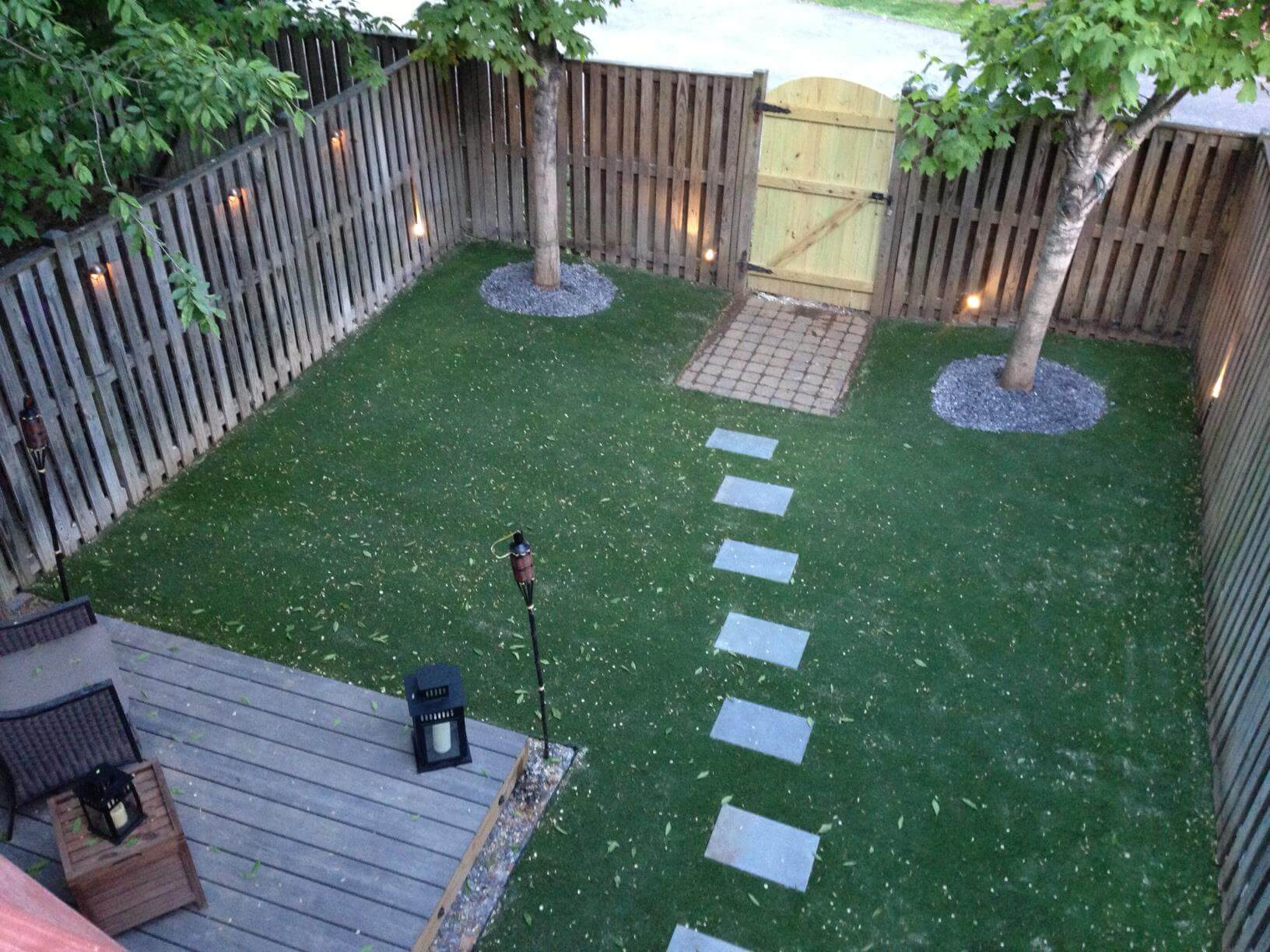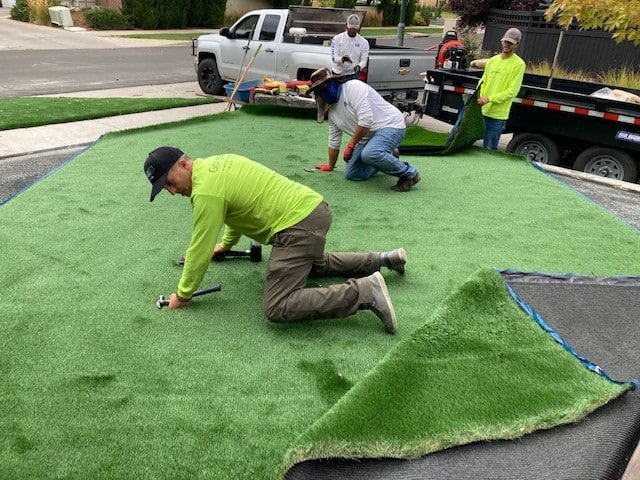Find the Best Artificial Grass for Your Canoga Park Property
Find the Best Artificial Grass for Your Canoga Park Property
Blog Article
Top Reasons to Take Into Consideration Artificial Turf for a Lush and Low-Maintenance Backyard
As property owners significantly look for lasting remedies for exterior areas, artificial lawn presents an enticing alternative to conventional grass. The benefits prolong past simple visual appeals and sustainability; discovering the multifaceted ramifications of synthetic yard exposes a comprehensive method to yard monitoring that advantages much deeper consideration.
Year-Round Greenery
Among one of the most substantial advantages of artificial lawn is its capacity to provide year-round greenery, despite climate conditions. Property owners frequently face obstacles in preserving a vivid yard as a result of seasonal changes, droughts, or heavy rains. Fabricated lawn removes these problems, ensuring a constantly rich appearance throughout the year.
This synthetic option is crafted to endure different climate circumstances, from blistering summer warm to freezing winter months temperatures. Unlike all-natural turf, which might brown or become irregular during extreme problems, synthetic grass keeps its lively shade and texture, enhancing the visual charm of any kind of landscape.
Furthermore, artificial lawn is resistant to bugs and illness that usually influence all-natural yards. This durability contributes to its enduring beauty, as there is no requirement for chemical therapies or plant foods that can be hazardous to the atmosphere. Moreover, house owners can take pleasure in the visual benefits of a well-maintained grass without the intermittent difficulties posed by all-natural turf treatment (artificial grass installation).
Minimized Upkeep Efforts
Synthetic turf significantly minimizes maintenance efforts, permitting homeowners to appreciate an excellent yard without the lengthy tasks associated with natural turf care. One of one of the most notable advantages of artificial turf is the elimination of normal mowing. Without any demand for a lawnmower, property owners conserve both time and the price of maintenance connected with this tools.

Cleansing synthetic grass is simple; a straightforward rinse with a hose or the occasional cleaning to remove debris is typically sufficient - artificial grass. This ease of care allows property owners to spend more time enjoying their outside areas instead of laboring over them. In recap, the decreased maintenance initiatives associated with fabricated turf make it an enticing selection for those looking for a lovely, convenient yard
Water Conservation Benefits
The considerable reduction in maintenance initiatives associated with synthetic lawn expands to water preservation, making it an eco-friendly choice for house owners. Typical lawns call for considerable quantities of water to continue to be lively and lush, frequently bring about extreme water use, especially in dry regions. In contrast, synthetic yard gets rid of the requirement for regular watering, substantially minimizing the general water intake in your lawn.
By deciding for artificial lawn, property Our site owners can conserve thousands of gallons of water every year. This change not only advantages private families however additionally adds to broader environmental efforts targeted at lowering water waste. In locations experiencing water scarcity, the fostering of man-made yard can play a substantial duty in mitigating the impacts of drought and ensuring that beneficial water sources are made use of more effectively.
Furthermore, the setup of synthetic turf can help lower metropolitan water need, profiting the neighborhood all at once. With expanding recognition of environmental concerns, selecting fabricated turf functions as a positive action towards sustainable landscaping, helping to preserve all-natural water resources while keeping a visually pleasing outside space (artificial grass). In summary, man-made turf provides an engaging solution for water conservation, lining up environmental responsibility with contemporary landscaping needs

Bug and Allergy Decrease
A substantial benefit of setting up artificial turf is its ability to reduce bugs and irritants in outdoor rooms. Conventional lawn lawns usually function as breeding grounds for bugs such as insects, ticks, and ants, which can develop discomfort and health and wellness threats for families and animals. On the other hand, man-made yard removes the organic product that attracts these insects, thereby dramatically lowering their populations in your backyard.
In addition, natural yard can nurture mold, plant pollen, and various other allergens, which can trigger allergies and respiratory issues for sensitive individuals. Artificial lawn offers a cleaner environment, minimizing the potential for allergenic reactions. Unlike all-natural turf, fabricated turf does not generate pollen, making it an exceptional choice for allergy sufferers seeking to appreciate their outdoor spaces without the threat of flare-ups.
Additionally, the lack of soil in fabricated grass indicates there is much less dust and dust, more decreasing airborne allergens. This low-maintenance alternative not just boosts the aesthetic charm of your lawn but also advertises a much healthier exterior setting, permitting households to appreciate their yards without the consistent worry of allergens and insects. Therefore, artificial grass is a strategic option for those prioritizing convenience and wellness in their exterior living areas.
Long-Term Expense Cost Savings
Spending in artificial grass can lead to considerable long-term price savings for house owners. Synthetic yard eliminates the need for regular grass article upkeep costs, such as mowing, feeding, and watering.
Furthermore, the longevity of synthetic turf further improves its cost-effectiveness. The majority of top quality artificial turf products can last 15 to 25 years with marginal maintenance, minimizing the need for substitute or comprehensive repairs. In contrast, natural grass might call for frequent reseeding and normal treatment, which can swiftly build up in costs.
Energy cost savings are one more important aspect. House owners can anticipate to see lower water bills, as artificial lawn does not require watering. Furthermore, the reduction in lawn care services can maximize beneficial time and sources, enabling house owners to allot their view it budgets somewhere else.
Conclusion
In summary, man-made yard offers countless benefits for home owners looking for a low-maintenance and vivid landscape. Inevitably, the long-term price financial savings connected with man-made turf strengthen its condition as a lasting and practical service for boosting outside rooms.
Artificial lawn substantially reduces upkeep efforts, allowing homeowners to delight in a pristine yard without the time-consuming tasks connected with natural yard care.The considerable reduction in maintenance initiatives linked with man-made turf prolongs to water preservation, making it an ecologically pleasant alternative for home owners. In contrast, man-made yard removes the need for normal watering, drastically minimizing the overall water intake in your lawn.
In areas experiencing water deficiency, the fostering of man-made grass can play a considerable duty in alleviating the results of dry spell and ensuring that valuable water sources are made use of more effectively.
With growing recognition of ecological problems, choosing man-made yard offers as an aggressive step in the direction of sustainable landscaping, assisting to preserve natural water resources while keeping an aesthetically pleasing exterior area.
Report this page